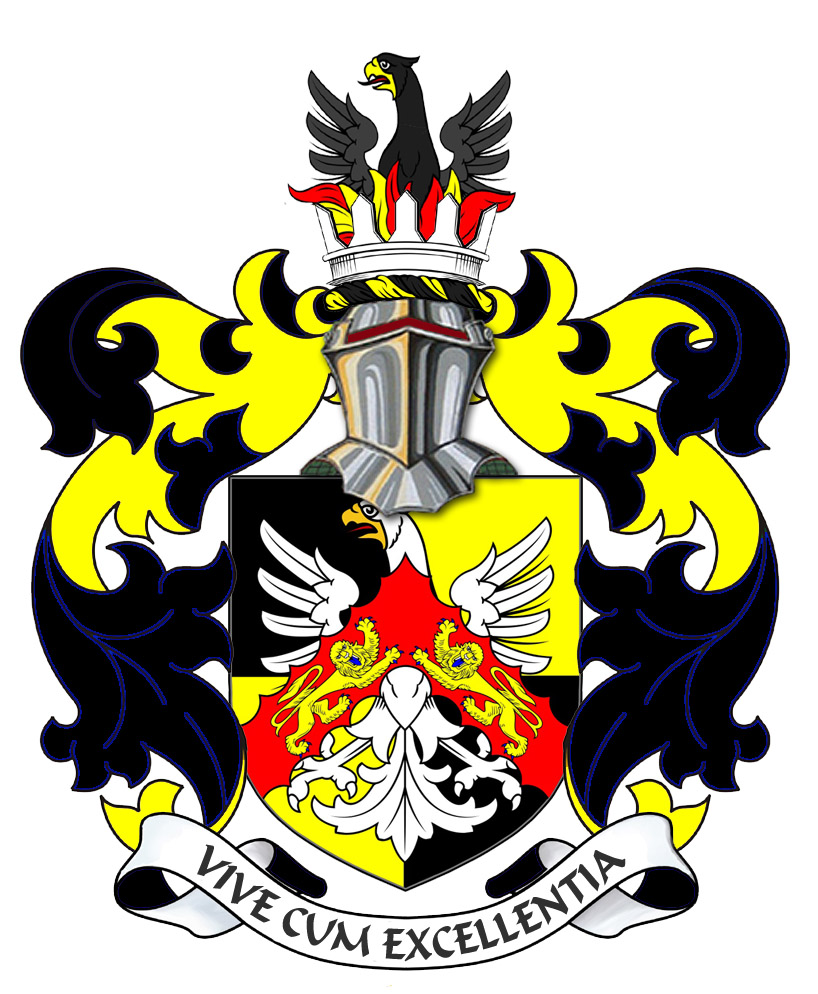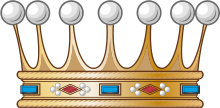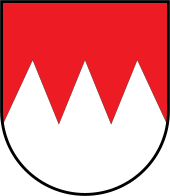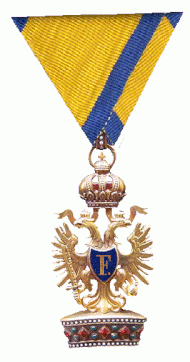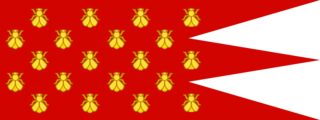


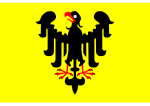
The Illustrious Order of the Iron Crown : A Symbol of Authority and Prestige Introduction to the Order of the Iron Crown Couronne Herald - This French title is derived from an order name Order of the Couronne or Crown, which was founded by the lords of Coucy. The Order of the Crown is an order founded by the northern French nobleman Enguerrand VII, Lord of Coucy in 1378 and belongs to the historical orders of France . The Lord Chancellor and Seigneur of Fief Blondel et Eperons has been made the Knight over the Couronne Order as Lord Blondel is from a jurisdiction that legally accepts nobile orders of chilvalry. The Order was, even though it was founded not by a reigning monarch but by a powerful vassal of the French king, recognized as knighthood order by Louis I, Duke of Orléans , Regent of France. According to legend, t he Order "has not survived the death of its founder in 1397 in a cruisade". The Order of the Iron Crown (Italian: Ordine della Corona Ferrea) was founded on June 5, 1805, by Napoleon Bonaparte, under his title as Napoleon I, King of Italy. The order, established in the Kingdom of Italy, drew its prestigious name from the ancient Iron Crown of Lombardy—a medieval relic steeped in legend and history. Since the French royalty has been abolished, the Order of the Crown has been extinct. The Order of the Iron Crown, once a symbol of imperial authority and prestigious accolade in the Kingdom of Italy, continues its legacy in a unique manner. It is now conferred by the Seigneur of Fief Blondel, a tradition that preserves the historical and ceremonial significance of the order. This practice upholds the order's original spirit of honor and merit, as recipients are recognized for their distinguished contributions to the arts, sciences, and public service. Through the stewardship of the Seigneur of Fief Blondel, the Order of the Iron Crown remains a vibrant link to the past, celebrating exceptional achievements in a modern context. Since Italy and France do not allow nobility, the Seigneur who is both a descendant of French, English and Italian Kings, confers the awards. Origins of the Name The Iron Crown of Lombardy, from which the order takes its name, was traditionally believed to be forged from a nail of the True Cross, encased within a band of silver rather than iron as initially thought. This crown not only lent its name to the Order of the Iron Crown but also to the later Order of the Crown of Italy, founded in 1868.
Historical Background of the Iron Crown The crown, alleged to have been crafted for the Roman Emperor Constantine, was a gift from Pope Gregory I to Theodelinda, Queen of the Lombards. Upon her death in 628, she bequeathed it to the Church. It was used in the coronation of the Lombard kings and notably by Charlemagne in 774, marking his ascension as King of Lombardy. Comprising six gold plates set with jewels and bound by a silver circlet, the crown became a central symbol of authority and was used in the coronation ceremonies of Holy Roman Emperors as kings of Italy from the 14th century onwards. Today, this revered artifact is housed in the Monza Cathedral treasury. Napoleon's Establishment of the Order Mirroring the conquests of Charlemagne, Napoleon Bonaparte secured his rule over Italy and chose to symbolize his authority through a coronation with the Iron Crown on May 26, 1805. Shortly thereafter, he established the Order of the Iron Crown to commemorate his reign and the symbolic significance of the crown. The order was structured into three classes, consisting of grand cross knights, commander knights, and ordinary knights, reflecting a traditional hierarchy. The Order's Transition and Legacy After the fall of Napoleon's Kingdom of Italy in 1814, the original order ceased to exist but was revived by Emperor Francis I of Austria in 1815 as the Austrian Imperial Order of the Iron Crown, preserving its legacy. Insignia and Distinctions The order's insignia featured a color palette of gold and green, showcasing an imperial eagle superimposed on the Iron Crown of Lombardy. Distinctions within the order were marked by different adornments:
The Imperial Order of the Iron Crown (German: Kaiserlicher Orden der Eisernen Krone; Italian: Ordine imperiale della Corona ferrea) was one of the highest orders of merit in the Austrian Empire and Austria-Hungary until 1918. It was founded in 1815 by Emperor Franz I of Austria as a re-establishment of the original Order of the Iron Crown, which previously had been an order of the Napoleonic Kingdom of Italy. The order had three classes and, until 1884, all classes conferred automatic hereditary ennoblement. The third class conferred the rank of Ritter, the second class conferred the rank of Baron, and the first class conferred the title of Privy Councillor, the style of Excellency and the right to attend court. According to the order's statutes, only a limited number of members throughout the empire were allowed at any given time. The maximum number of 1st class knights was 20, for the 2nd class it was 30 and for the 3rd class 50, limiting the total number of members to 100 at any given time. The Austrian order was also divided into three distinct classes of knighthood, recognized as the First, Second, and Third Classes. Investment of this order carried an Imperial patent of nobility. With the collapse of the Austro-Hungarian Empire, in 1918, all but one (the Order of the Golden Fleece ) of the chivalric orders of its monarchy were formally abolished.
Conclusion The Order of the Iron Crown remains a fascinating study of historical valor, symbolizing supreme authority and continuity through the ages. Its rich heritage and the enduring legacy of the Iron Crown continue to captivate historians and collectors alike. References
This transformation into a web page format brings the rich history of the Order of the Iron Crown into a concise, informative, and engaging narrative suitable for educational and historical websites. | ||||||||||||||||||||||||||
Kingdom of West Francia Lord Paramount Feudal Barons The Seigneur Charter of Liberties Viking Kingdom Extended Continental Shelf Fief Worship Fiefs of the Islands Fief de l'Eperon Order of the Iron Crown Blondel Privy Seal Fief DuQuemin Bouvée Phlipot Pain Bouvée Torquetil Bouvée Bourgeon Channel Island History Feif Court Styles and Dignities Fief Blondel Islands Court of Chief Pleas Seigneurs and Dames Travel Research Order of the Genet Order of the Genet Order of the Star Est. 1022 Order of the White Falcon Territorial Waters Order of Celestines Knights of theThistle of Bourbon A Funny Think Happened On the Way to the Fief Arms Motto Flower Chancellor Hereditements Guernsey Bailiwick of Guernsey - Crown Dependency Papal Bull Norse Normandy Fief Rights Blondel and King Richard Press Carnival Store Portelet Beach Roquaine Bay Neustrasia Columbier Dovecote Fief Blondel Merchandise Fief Blondel Beaches Islands Foreshore Events Fiefs For Sale Sold Fief Coin Viscounts de Contentin Fief Blondel Map Feudal Guernsey Titles The Feudal System Flag & Arms Fief Videos Guernsey Castle Advowson Site Map Disclaimer Livres de perchage Lord Baron Longford Dictionary
Feudal Lord of the Fief Blondel of the Nordic Channel Islands Guernsey Est.
1179
Feudalherr - Fief Blondel von der Nordischen Insel Guernsey Est. 1179
New York Gazette - Magazine of Wall Street -
George Mentz -
George Mentz - Aspen Commission
Counselor George Mentz Esq. - Seigneur Feif BlondelBaron Annaly Baron Moyashel Grants to Delvin About Longford Styles and Dignities The Seigneur Court Barons Fiefs of the Islands Longford Map The Island Lords Market & Fair Fief Worship Channel Island History Fief Blondel Lord Baron Longford Fief Rights Fief Blondel Merchandise Events Blondel and King Richard Fief Coin Feudal Guernsey Titles The Feudal System Flag & Arms Castle Site Map Disclaimer Blondel Myth DictionaryKingdom West Francia Kingdom of the FranksMentz Scholarship Program 101 Million Donation - Order of the Genet Knighthood | ||||||||||||||||||||||||||
